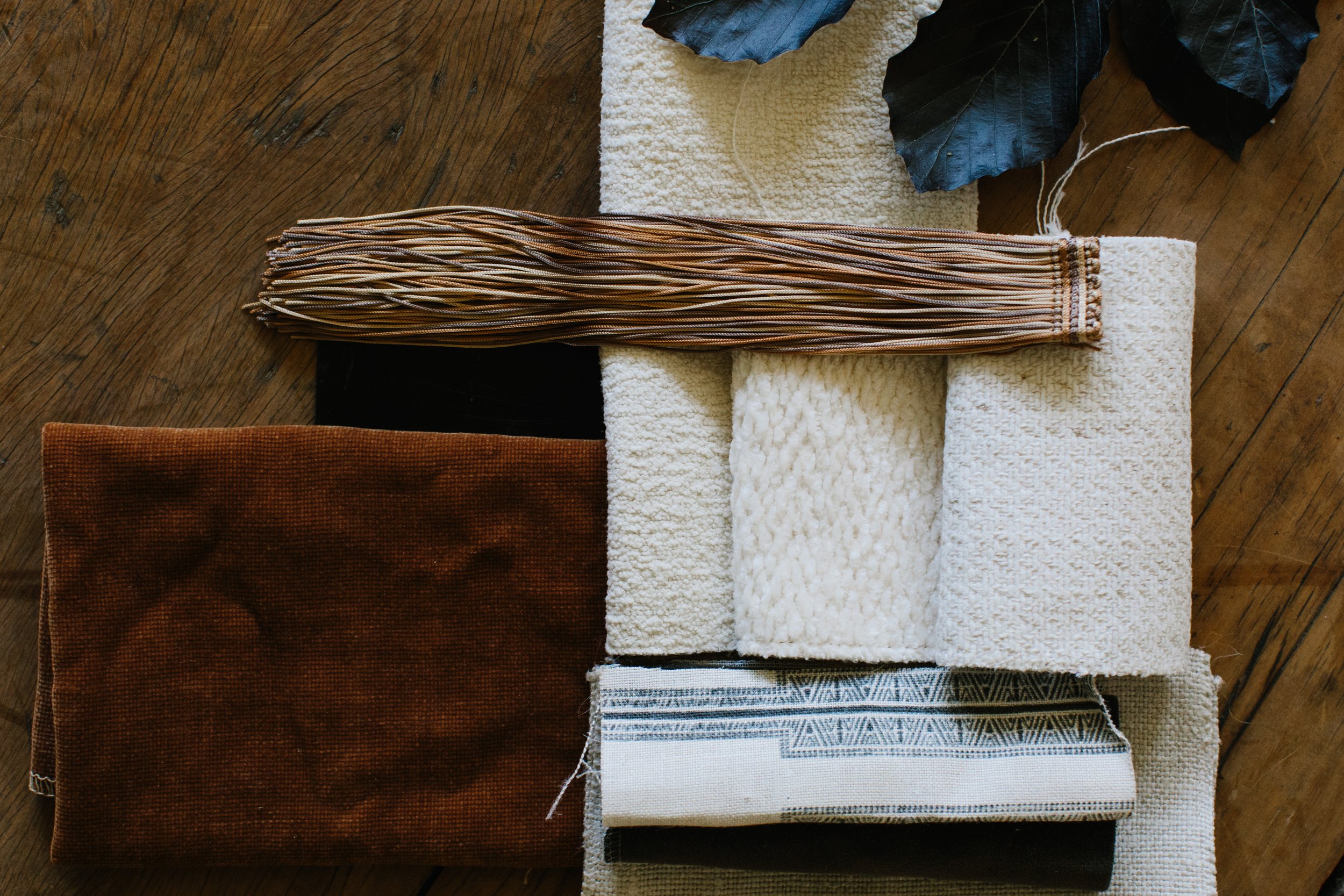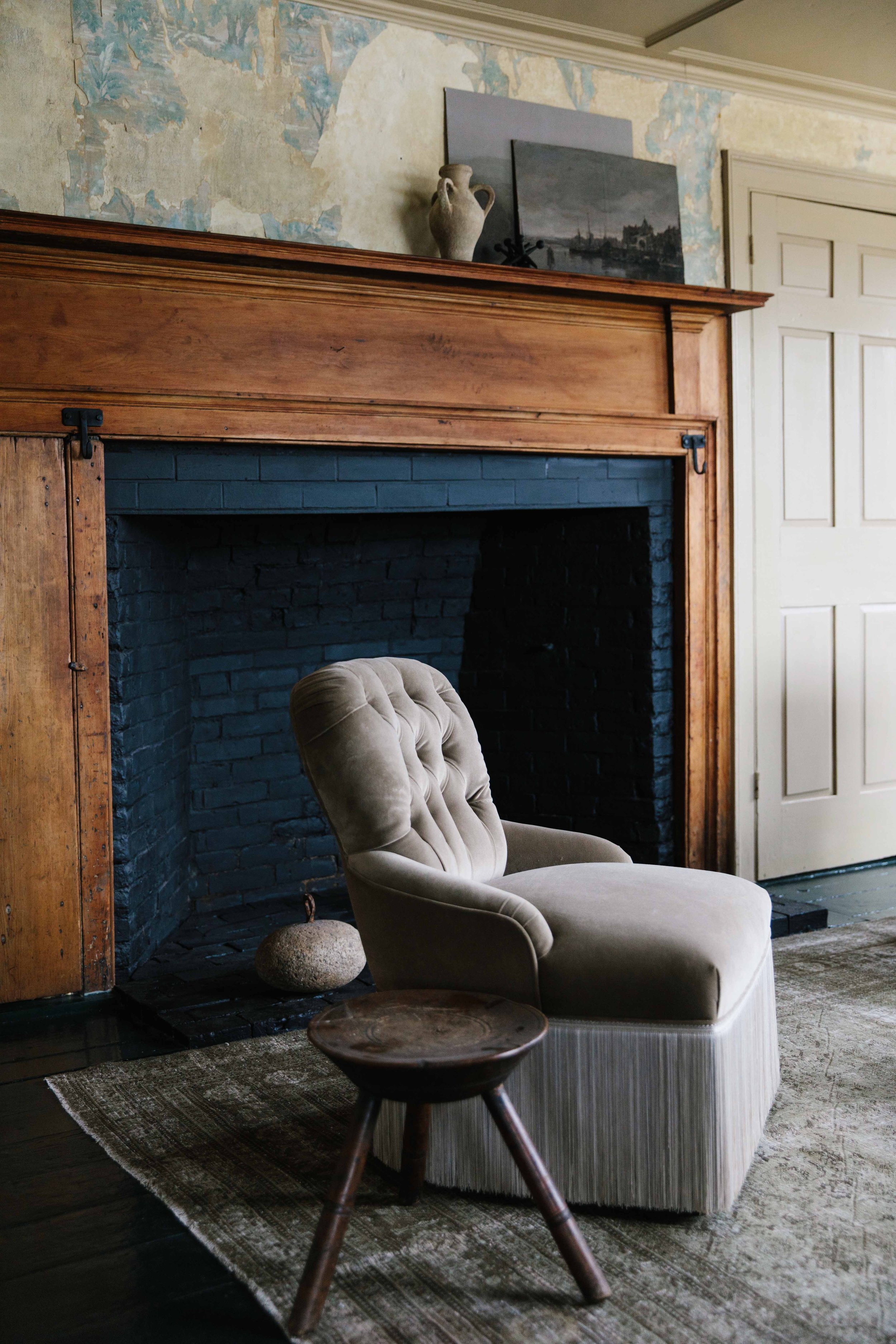The Lowdown on Reupholstery and Upcycling
A gorgeous piece of furniture that is both sustainable, and completely custom — Is there really any better combination? We think not.
You’ve probably heard us on Instagram tout reupholstering pieces as more sustainable than shopping new. Sustainability is at the core of what we do here at Moore House Design so with each project we take on, we make an effort to incorporate environmentally friendly and sustainably sourced pieces — often coming in the form of refurbished antiques. If the opportunity to restore a piece by reupholstering it presents itself, nine times out of ten we’ll do it… and here’s the lowdown on the practice.
Upcycling is more sustainable than shopping new for a lot of reasons.
*Upcycling* is the process of transforming by-products, waste materials, useless, or unwanted products into new materials or products perceived to be of greater quality, such as artistic value or environmental value. So in other words thrifting or finding an old chair to then reupholster with vintage sourced fabrics falls under the umbrella term upcycling because you’re creating something improved from two previously thought useless items.
— Why We Love It —
No. 1
Green-washing is a big thing these days and almost every company out there has some sort of “sustainable” or “eco-XXX” to meet social standards, but a lot of the time there is little to no transparency on the subject. With that, you may never really know the environmental practices of said retailers (we try our best to work with the most sustainable retailers we can). It’s always good to know where things come from and with what practices they were created. Re-upholstering a piece gives you the opportunity to source things yourself.
No. 2
As a designer, liberties can be taken throughout the process from using extra foam in one area to bulk up an arm to adding fringe along the base like a skirt. Texture and color are everything for us when it comes to selecting upholstery fabrics. Rifling through the drawers upon drawers of swatches in our studio has to be one of our favorite parts of the upholstery rehabbing process. This is where things can get really fun and we like to push the envelope a little bit!
No. 3
Building off that, upcycling gives way to a final piece that is completely unique. Standardization is kind of the death of personality when it comes to design. The home should be a reflection of who lives there and we find custom items to be IDEAL because they’re often one of a kind just like people.
No. 3
This one might surprise you, but reupholstering a piece can be more economical depending on the choices you make along the way!
— To Reupholster or Not To Reupholster —
Many of us, furniture owners and designers alike, find ourselves between a rock and a hard place from time to time when the fabric of a piece we love has become shabby to the point of no return. It is almost always worth reupholstering your piece if your frame isn't broken or damaged — if you can keep it out of a landfill, do it. Right? As much as we love it, unfortunately, not every piece of furniture is a good candidate for reupholstering! Here are some things to consider in the decision process.
No. 1
Look past the current fabric or its condition to the furniture's bones… does it have a nicely shaped arm or an interesting leg detail?
No. 2
Check the framing, if it’s hardwood then it’s all good. Other particle board framing will probably not stand the test of time.
No. 3
Check to make sure there isn’t a significant amount of damage to the bones of the piece. If there are springs, are they intact and is the piece still overall relatively comfortable? If the bones seem intact and it’s comfortable, then you have an easier road ahead. Damage to the internal workings of the upholstery will make for a little more labor-intensive project.
No. 4
Lastly, does this piece have monetary or sentimental value, and will it fit into your home’s aesthetic with a different fabric selection?
*One more thing to consider about your own sustainable choices and maybe a little psychology*
“The Faustian Dilemma of Sustainability”: The term Faustian implies the sacrifice of spiritual values for power, knowledge, or material gain… Basically, what this concept boils down to with regard to sustainability is that people tend to make more environmentally friendly choices only if they are easier, cheaper, or more convenient than what they are already doing. Many of us like the idea of reupholstering a piece but when it comes down to actually doing it, fail to follow through. So, It might not be faster, it might not be easier or cheaper, but the end results are worth it.
A Few of Our Favorite Upcycles…
~ The Pavilion Chairs ~
BEFORE
AFTER
There are clients, and then there are clients with gorgeous furniture. This set of chairs piqued our interest when we first saw them in our client’s living room. With their super tall wing-backs, they undoubtedly had great bones and were perfect candidates for re-upholstery. We selected vintage crushed velvet fabric in a rusty amaretto hue to add warmth and then added some fringe in a warm champagne color along the base to create a bit of drama. We love when we can incorporate pieces our clients already have into a final design.
~ The Marie Tea Chairs ~
BEFORE
AFTER
These petite tea chairs have been in the cottage since it was bought by our family a few decades ago. We like to use what we have and we figured this pair could use a modern update! We selected a soft taupe velvet fabric from @kravetinc that sort of reminded us of a field mouse’s fur and we couldn’t resist the texture — it’s uber soft and highly addicting to rub your hand across. Though these chairs do have cute little legs we thought some silk fringe would dress them up a little bit. The tonal color scheme of this reupholstery transformation turned out even better than we’d planned!! We can’t forget to mention the certain liberties that can be taken through this transformation process… By looking at the before and after photo, you can see a subtle difference in back shape. We curved the back of the chair slightly by adding more layers of fill which added a romantic flair to the lovely form of the pair. It’s amazing how such small shifts in angles and forms can positively impact the end result.
~ The Minimalist’s Chair ~
BEFORE
AFTER
We’ve mentioned it before, but it’s too good not to add here for reference! We transformed this $40 thrift store chair with good bones into a cozy statement piece with a little help from a lovely smoked toffee-color mohair fabric from @kravetinc. Though this chair itself was not a high-value “antique” a simple re-upholstery job made for quite the glow-up. Though it goes against what we’ve said about pieces needing to be higher quality to be worth the trouble, this is a prime example of upcycling!! Take something that many might see as garbage, put the work in, and then the results can be all the more rewarding.






















The Roweam Earthenware Collection is rooted in reverence for the natural world—a grounded celebration of texture, form, and sustainability. This curated offering honors the quiet strength of the earth, featuring hand-hewn woods, sun-warmed ceramics, and raw, time-worn materials that echo ancient landscapes. Designed to elevate interiors while paying tribute to the places that inspire them.